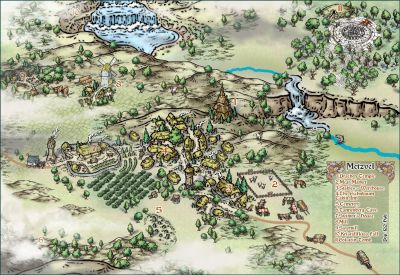
Monsen
Monsen
About
- Username
- Monsen
- Joined
- Visits
- 693
- Last Active
- Roles
- Administrator
- Points
- 8,958
- Birthday
- May 14, 1976
- Location
- Bergen, Norway
- Website
- https://atlas.monsen.cc
- Real Name
- Remy Monsen
- Rank
- Cartographer
- Badges
- 27
-
Live Mapping: Book of Maps style (Annual 2022)
@jmabbott the issue with that scheme is that it makes it easier IF you know exactly when the style was from, but if you are looking for a style by name, it is a huge unsortable mess making styles much harder to find. It may make sense as you are following along the current year, but whenever you wanted a style from an earlier annual, it would be much harder to find.
Personally, I usually never remember when I style came out, but I usually know the exact/approximate name of it.
Obviously, the new map dialog could be better, it was written at a time when we only had a handful of styles, but until we get a better one, my vote at least goes to sort it by the most important part, the actual name of the style and not some prefix. (I am not much a fan of the "Annual" prefix either)
-
Outlining Multipolys
When you outline a multipoly, the outline itself also becomes a multipoly. Amultipoly is always a filled entity, so you cannot set line width on it. That thin outline you initially get is the Hollow fill style, which is the only way to have an outline with a multipoly.
However, the main reason for having a multipoly in the first place is so you can have a hole in the poly. For the outline, this is kind of irrelevant because it isn't a solid surface you need a hole in. So you can explode the outline you get, and then use change properties on it (remember to pick all the entities that made up the outline multipoly), and set the fill style to solid, color to black, and a line width of your choice.
-
a large city, I have been putting off, now started
@JimP wrote:
Each square on this map is 200' x 200'.
That scale does sound a bit weird when I look at the symbols on your map. Even the tiniest buildings I can find in your latest map would then be about 50'x50' and the trees fill almost an entire 200x200 square on their own.
-
Changing Grid Fill line Pattern
-
WIP: Dominion of Ostia
If you don't find the correct line style, it is easy enough to make your own. Just click the line style indicator, and make a new style. For a dotted style, you'll want very short line segments, and a distance between them that is still quite short, but at least twice as long as the line segments. And make sure you don't use paper scale.









